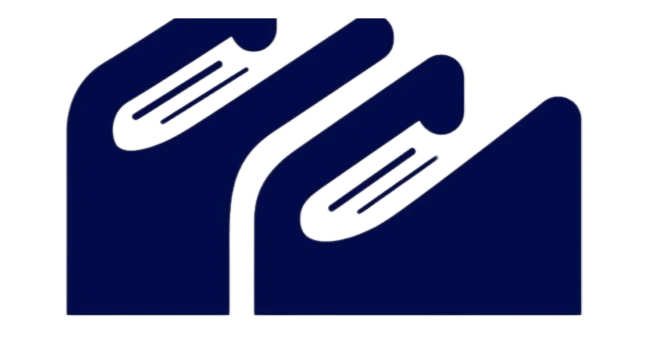Hevea brasiliensis, the Latin or scientific name for “rubber,” is an essential industrial plant. Here are some facts about rubber.
Whether acknowledged or not, the fact remains that throughout history, for about two centuries, rubber has provided life and livelihood for the Dayak people. Rubber quickly turned into a source of income. Tapping in the morning, and by the afternoon, it could already be sold. It’s not surprising that in the past, Dayak families could sustain their lives and afford education due to the pivotal role of rubber.
Superior rubber variety called Lanbaw
During the colonial era, rubber farmers in Sanggau experienced a period of prosperity known as the “coupon era.” At that time, Dutch companies such as NIRUB (Nederland Indie Ruber) played a significant role in transporting rubber from the region via submarines.
Read The Allocation of World Land for Palm Oil Cultivation
This company introduced a superior rubber variety called Lanbaw, with stems as large as drums and latex equivalent to paint cans. Rubber became the main source of income for the population until the 1990s, enduring through the administrations of Presidents Megawati and SBY.
The plummeting rubber prices
The plummeting rubber prices have led farmers to refrain from tapping rubber. Faced with low prices, farmers are confronting serious economic challenges, prompting them to opt out of financially unprofitable rubber tapping activities. This situation has created a negative impact on the rubber farming sector and raised concerns about the welfare of farmers dependent on the yields from their rubber crops.
Read CU Pancur Kasih Kian Mengepak Sayap Pelayanannya
However, since then, the fate of rubber farmers in Sanggau has declined. The rubber price, which once reached IDR 200,000 per kilogram, is now only around IDR 5,000/kg. Despite briefly reaching IDR 13,000/kg during the Megawati and Susilo Bambang Yudhoyono administrations, rubber prices have drastically fallen. This has led to a decrease in the welfare of rubber farmers, presenting a serious challenge for rubber cultivation.
Options faced by rubber farmers
Regarding the options faced by rubber farmers, there are several considerations to be taken into account:
- Conversion to Coffee or Cocoa in Customary Forest Lands: Shifting rubber land to coffee or cocoa plantations can be an alternative. However, it must be ensured that this does not harm the customary forest ecosystem and still adheres to environmental sustainability.
- Conversion to Oil Palm Plantations: Oil palm is a popular and profitable commodity in recent years. However, it should be noted that the expansion of oil palm plantations often leads to deforestation and other environmental impacts, so this must be carefully considered.
- Diversification of Agriculture: Rubber farmers can seek other alternatives in agriculture, such as combining rubber with other crops with good market potential, such as fruits or vegetables. Diversification can help reduce the economic risks faced by farmers if one commodity experiences a price decline.
- Improving Efficiency and Quality: Rubber farmers can also strive to improve efficiency in their rubber production, enhance planting techniques, and improve rubber quality to attract a better market.
- Government Role: Local and central governments can play a role in supporting rubber farmers, whether through assistance programs, training, or finding better markets for rubber products.
The mention of Megawati and Susilo Bambang Yudhoyono brings back memories
Memories of the rubber industry’s prosperity bring to mind the era of two presidents, namely Megawati and Susilo Bambang Yudhoyono. During their presidencies in the Republic of Indonesia, it can be said that rubber farmers were well-supported.
The rubber price once reached IDR 13,000/kg during the Megawati and Susilo Bambang Yudhoyono administrations; now, rubber prices have drastically fallen. This has led to a decline in the welfare of rubber farmers, presenting a serious challenge. Rubber is a plant that produces the main raw material for natural rubber production. The commonly used rubber plant is Hevea brasiliensis, originating from South America and now cultivated in various tropical countries worldwide.
Read Das Kapital : The Televance to the Current Situation in Indonesia
Natural rubber is produced from latex obtained from the rubber plant’s stem. This latex contains natural rubber polymers used in various rubber products.
Natural rubber is a crucial raw material in the manufacturing industry. It is used in various products such as car tires, motorcycle tires, hoses, rubber gloves, shoes, and many other products.
One of the main uses of rubber is in tire manufacturing. About 70% of total rubber production is used for making car and motorcycle tires.
Rubber is an important commodity in the economies of many countries. Rubber production creates jobs for millions of rubber farmers and workers in related industries.
Read The Fate of IKN in the Post-President Jokowi Era
Rubber plants are grown on a large scale in rubber plantations. These plantations are usually located in tropical regions with climates suitable for plant growth.
One of rubber’s main properties is its elasticity. This property allows rubber to stretch and return to its original shape after being stretched or compressed, making it suitable for various applications.
The rubber processing process involves latex collection, milling, drying, and shrinkage into more tradeable forms, such as sheets or blocks.
The rubber market is a significant global market, with countries like Indonesia, Thailand, Malaysia, Vietnam, and India being major producers of natural rubber.
Rubber is a valuable commodity that plays a vital role in our daily lives and manufacturing industry. This essential role makes the rubber plant an integral part of the economies and lives of many countries worldwide.
Read SAWIT | Dari Fosil ke Biofuel
Deciding on the best option for rubber farmers in Sanggau will involve many stakeholders, including the farmers themselves, the government, and other stakeholders.
It is essential to find economically, socially, and environmentally sustainable solutions so that the future of rubber farmers can be improved and remain competitive in the global market. *)
Illustration: Rubber plantations and their processing in the plantation area. Illustration: Kris Lukas.






